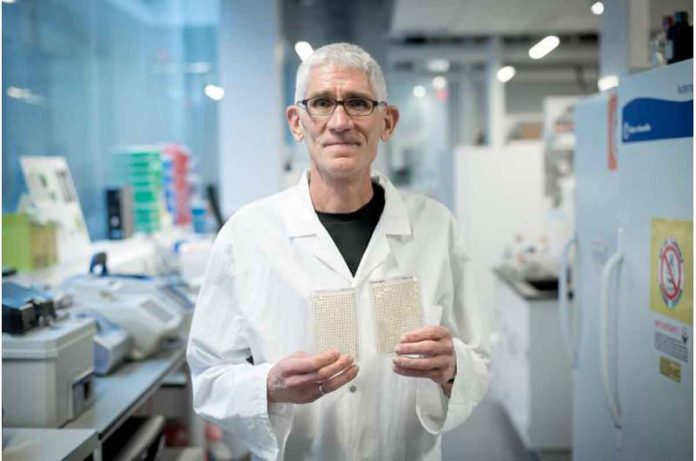Four science experiments, including one from Canada, will be aboard NASA’s Artemis 1 lunar mission when it launches on August 29.
Dr. Corey Nislow of UBC Pharmaceutical Sciences is sending yeast and algae cultures into space in a shoebox-sized pod to study the effects of cosmic rays and near-zero gravity on living organisms.
Dr.Nislow will receive his samples, as well as the information they contain, when the spacecraft returns from its unmanned 42-day orbit around the Moon.
He explains what the NASA project could mean for medical advances on Earth and in space in this Q&A.
What exactly are you sending into space, and why are you doing so?
We chose Chlamydomonas reinhardtii, a single-cell green alga, and 6,000 yeast mutants to study. As Orion (the spacecraft used for the Artemis mission) completes its journey to the far side of the Moon, they will be grown for up to seven generations. Yeast is a good model for human cells because its genes are similar to human genes, whereas C. reinhardtii was chosen as a plant model and a valuable source of food, molecular oxygen, and hydrogen for fuel.
What happens after you receive the samples?
We’ll look at the genetic changes caused by space travel using our UBC lab’s database of 10 million gene-drug interactions and data from 20 years of research on these organisms. The knowledge we gain will aid in the development of better treatments for future space travellers as well as cancer patients undergoing chemotherapy.
For example, we want to see if the genome-wide signature of yeasts in response to cosmic radiation is similar to that of cells exposed to DNA-damaging cancer drugs. Our preliminary findings indicate that the answer is yes. As a result, the Artemis mission will point us in the right direction for developing countermeasures to combat radiation damage to both yeast and crew member DNA, as well as ways to reduce the side effects of various chemotherapies.
What else do we need to know about this experiment?
For the first time in 50 years, biological materials will be launched into lower Earth orbit, exposed to cosmic radiation, and then returned to our laboratory for detailed molecular analysis. We will apply cutting-edge biotechnology to the one-of-a-kind environment of cosmic radiation and microgravity.
The upcoming flight of Artemis 1 is a test flight for a future lunar mission that will return humans to the Moon. It will pave the way for longer missions—NASA has stated that it hopes to send astronauts to Mars in the 2030s or soon after. Being a part of such a historic project is a once-in-a-lifetime opportunity.

